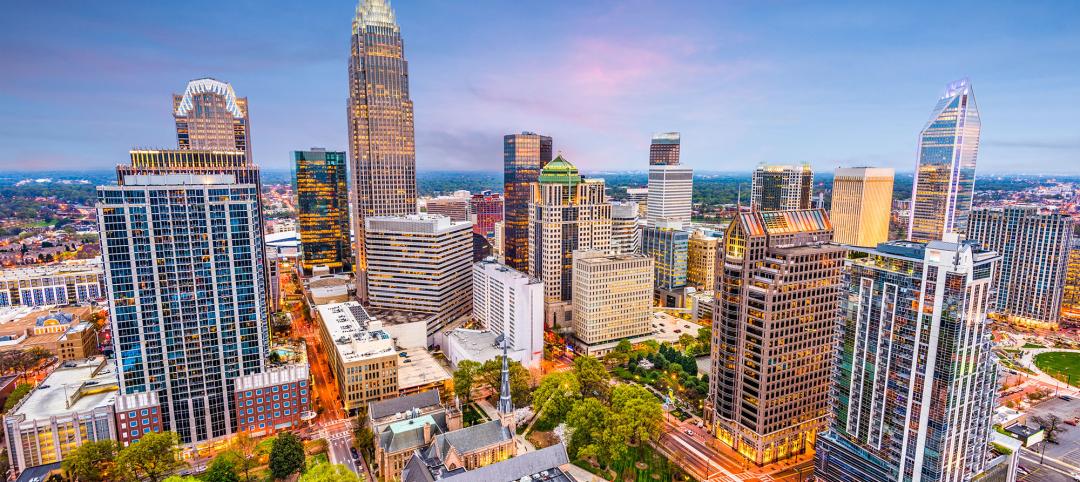In its latest Supply and Demand Outlook for the Los Angeles Apartment Market, the real estate brokerage and research firm Marcus & Millichap stated that L.A. “is in the midst of the largest housing boom in decades, as developers rush to complete projects in the county.”
Last year, 10,200 rental apartments came online in Los Angeles, and another 8,500 could be added in 2015.
That construction activity should be good news for Los Angeles’ overall economy, if history repeats itself. Research commissioned by the National Multifamily Housing Council and the National Apartment Association finds that apartment construction, operations, and resident spending contributed $63.1 billion and supported more than 534,900 jobs in the Greater Los Angeles area in 2013.
Those findings were released earlier this week by the Apartment Association of Greater Los Angeles, which represents 20,000 building owners and managers in Southern California.
In 2013, Los Angeles had 3,039,590 million people—23% of its population—living in 1,272,968 occupied rental homes and apartments. Thirty eight percent of those apartments are one-person households.
In 2013, Los Angeles had 3,039,590 million people—23% of its population—living in 1,272,968 occupied rental homes and apartments. Thirty eight percent of those apartments are one-person households. Apartment residents wielded $23.4 billion in spending power.
The study reports that two-thirds of the building permits issued in Los Angeles County were for multifamily. And it breaks down the economic contribution of apartment construction ($5 billion, or more than any other metro area in the country), operations ($11 billion), and rents ($47.1 billion).
Marcus & Millichap, though, raises some red flags about whether this economic bounty will continue. It notes that anticipated upward pressure on interest rates could temper investors’ enthusiasm for the apartment sector, further dissipating the buyer pool.
The research firm also notes that recent weakness in absorptions and rent growth—the latter of which increased by 4.4% in 2014 and is expected to rise by 5.2% this year to an average of $1,842 per month—might also make investors think twice about projects still on the drawing board.
Related Stories
Sustainability | Feb 7, 2024
9 states pledge to accelerate transition to clean residential buildings
States from coast to coast have signed a joint agreement to accelerate the transition to pollution-free residential buildings by significantly expanding heat pump sales to meet heating, cooling, and water heating demand in coming years.
Multifamily Housing | Feb 5, 2024
Wood Partners transfers all property management operations to Greystar
Greystar and Wood have entered into a long-term agreement whereby Greystar will serve as property manager for all current and future Wood developed and owned assets.
Industry Research | Jan 31, 2024
ASID identifies 11 design trends coming in 2024
The Trends Outlook Report by the American Society of Interior Designers (ASID) is the first of a three-part outlook series on interior design. This design trends report demonstrates the importance of connection and authenticity.
Mixed-Use | Jan 29, 2024
12 U.S. markets where entertainment districts are under consideration or construction
The Pomp, a 223-acre district located 10 miles north of Fort Lauderdale, Fla., and The Armory, a 225,000-sf dining and entertainment venue on six acres in St Louis, are among the top entertainment districts in the works across the U.S.
Sponsored | BD+C University Course | Jan 17, 2024
Waterproofing deep foundations for new construction
This continuing education course, by Walter P Moore's Amos Chan, P.E., BECxP, CxA+BE, covers design considerations for below-grade waterproofing for new construction, the types of below-grade systems available, and specific concerns associated with waterproofing deep foundations.
Multifamily Housing | Jan 15, 2024
Multifamily rent growth rate unchanged at 0.3%
The National Multifamily Report by Yardi Matrix highlights the highs and lows of the multifamily market in 2023. Despite strong demand, rent growth remained unchanged at 0.3 percent.
Adaptive Reuse | Jan 12, 2024
Office-to-residential conversions put pressure on curbside management and parking
With many office and commercial buildings being converted to residential use, two important issues—curbside management and parking—are sometimes not given their due attention. Cities need to assess how vehicle storage, bike and bus lanes, and drop-off zones in front of buildings may need to change because of office-to-residential conversions.
MFPRO+ News | Jan 12, 2024
Detroit may tax land more than buildings to spur development of vacant sites
The City of Detroit is considering a revamp of how it taxes property to encourage development of more vacant lots. The land-value tax has rarely been tried in the U.S., but versions of it have been adopted in many other countries.
MFPRO+ News | Jan 12, 2024
As demand rises for EV chargers at multifamily housing properties, options and incentives multiply
As electric vehicle sales continue to increase, more renters are looking for apartments that offer charging options.
Sustainability | Jan 10, 2024
New passive house partnership allows lower cost financing for developers
The new partnership between PACE Equity and Phius allows commercial passive house projects to be automatically eligible for CIRRUS Low Carbon financing.















